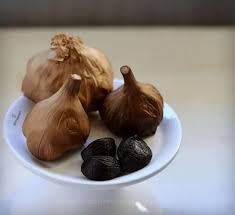Kalidasa’s
lyrics ‘?tusaMharma\’ (Ritusamharam)
and ‘maoGasandoSama\’
(Meghasandesam), two Mahakavyas ‘rGauvaMSama\’
(Raghuvamsam)
and ‘kumaarsaMBavama\’ (Kumarasambhavam)
and three plays ‘maalaivakaignaima~ma\’
(Malavikagnimitram),
‘ivaËmaaova-SaIyama\’ (Vikramorvasiyam)
and ‘AiBa&anaSaakuntlama\’ (Abhij`nanasakuntalam)
constitute the authentic works of Kalidasa. There are others which are spurious
but attributed to Kalidasa.
‘kumaarsaMBavama\’ (Kumarasambhavam):
‘kumaarsaMBavama\’ is a Mahakavyam which
describes the birth of Kartikeya and the preceding events that led to it. The
poem is available now in 17 cantos. But only the first 8 cantos are recognised
as genuine. The rest of the poem is held to be post-Kalidasa. The reason for
the abrupt ending of the commentary of Mallinatha at the completion of the 8th
canto is given as the poet’s violation in describing the sexual dalliance of
Parvati and Shiva. This noted commentator hence felt that the latter 9 cantos
had not been described as the title proposes. It stops with the description of
the wedding and the joy of the divine couple. The style, the language and the
use of similes for which Kalidasa is well known, talk in favour of Kalidasa
with respect to the latter 9 cantos. The importance of the poem lies in the
aesthetical values of description and in the depth of sensuous emotions. The
description of the
‘rGauvaMSama\’ (Raghuvamsam)
Raghuvamsam
is said to be the most perfect work of Kalidasa. the poem is now available in19
cantos. Kalidasa has tried in this the description of the glories of the Kings
of Solar Race. It is not a continuous account of all Kings of this race. The
poet confines himself to some Kings like ‘idlaIp:’
‘rGau:’ ‘Aja:’ ‘dSarqa:’ ‘rama:’ and some of his
successors. Lamentation over the death of Aja’s wife Indumati in the 8th
canto has become a classic of its own. This in a way is complementary to the
lamentation of Rati ³ritivalaap´ of
Kumarasambhavam. Here he devotes more number of cantos to the description of
Rama’s story. This has become a beautiful abridgement of Ramayana. After
describing the successor of Rama the 19th canto ends abruptly with
the death of Agnivarna ³AignavaNa-:´. The
style of Raghuvamsa is dignified. Kalidasa shows in this work the mastery over
the art of writing similes. This work of Kalidasa has apt and striking similes
and has been rightly considered as the best Mahakavya.
‘Baariva:’ (Bharavi):
Bharavi’s name is mentioned along with the
name of Kalidasa in the Aihole ³eohaolao´ inscription
dated 634 A.D. Hence Bharavi’s date cannot be brought down below this date.
Bharavi’s poem ‘ikrataja-naIyama\’ (Kiratarjuniyam)
is a Mahakavya in 18 cantos. The name Bharavi is not real name of the poet.
This must have been a title given to him by his patron King. But unfortunately
we do not have any information about his life except an incredible story.
Kiratarjuniyam
describes the story of Arjuna’s acquiring Pashupatastra - ‘paSauptas~’ from Lord Shiva, who coming in the
disguise of a hunter - ‘ikrat:’ tested
the strength and ability of Arjuna in an encounter. This incident is briefly
narrated in Vana Parva of Mahabharatam. Bharavi has transformed it into a
beautiful Mahakavya by graphic and elaborate descriptions on statecraft and
politics in a vigorous style quite appropriate to the heroic sentiment of the
Kavyam.
From Bharavi onwards the style of Mahakavyam became more elaborate and artificial. The natural and simple style of Kalidasa and other early poets gave way to verbal tricks and subtle expressions. Bharavi is famous for his dignified thought expressed in crisp and vigorous style - ‘Baarvao: Aqa-gaaOrvama\’. The famous example of ‘Aqa-gaaOrvama\’ can be found in the following verse:
‘sahsaa
ivadQaIt na iËyaaM Aivavaok: prmaapdaM pdma\.
vaRNauto ih ivamaRSyakairNaM gauNalaubQaa:
svayamaova saMpd:..’
‘maaGa:’ (Magha):
‘maaGa:’ is the son of ‘d<ak:’ (Dattaka). He is the author of the Mahakavya called ‘iSaSaupalavaQama\’ (Sishupalavadham) consisting of 20 cantos. It describes the killing of iSaSaupala by Lord Krishna. Magha belongs to the beginning of 8th century A.D. A simple incident from the Mahabharatam where Lord Krishna kills iSaSaupala: at Yudhishthira’s Rajasuya sacrifice has been taken by Magha and developed into a great epic like Bharavi. Magha also introduced a discussion on the state policy in the second canto. Dandin’s definition of Mahakavyam strictly applies to this work. Magha excels Bharavi in the artificiality of his time. He imitates Bharavi in many respects and he is admired for his delightful style, profound thoughts and beautiful similes.
‘]pmaa kailadasasya Baarvao: Aqa-gaaOrvama\.diNDna: pdlaaila%yaM maaGao saint ~yaao gauNaa:..’
‘Kalidasa excels in his similes, Bharavi excels in
depth of ideas, Dandin excels in his lucidity of words and Magha excels in all
the three qualities’.
Magha’s
vocabulary is very vast and his knowledge in grammar is deep. It is said if any
one studies 9 cantos of Magha there will be no words new to him ‘navasaga-gato maaGao navaSabdao na ivaVto’. The
toughness of his style can be inferred from the following remarks made by the
great commentator Mallinatha. ‘maaGao maoGao
gatM vaya:’ - One may have to spend one’s life time to understand
Magha’s ‘iSaSaupalavaQama\’ (Sishupalavadham)
and Kalidasa’s Meghadutam.
‘EaIhYa-:, the son of Heera and Mamalladeva, is the
author of the Mahakavyam ‘naOYaQaIyacairtma\’ (Naishadhiyacaritam). Sri Harsha was
patronised by Vijayachandra and Jayachandra of Kanauj in the latter half of the
12th C.A.D. ‘naOYaQaIyacairtma\’ (Naishadhiyacaritam) is said to have been
written in 60 cantos, but only 22 cantos are now available. The story of this
Mahakavya is taken from Nalopakhyanam of Mahabharatam. In the original the
story is narrated in a simple and beautiful style. Sri Harsha has developed it
into a great epic in a rough style which requires the help of commentators to
understand the meaning. Being a scholar of various Sastras, Sri Harsha has
embellished his works by drawing similes and topics from various Satras on
different terms of philosophy. Hence his work is considered to be a feast for
scholars. It is a brain tonic for a learner and a touchstone for scholars in
Sanskrit ‘naOYaQaM ivaWdaOYaQama\’.








